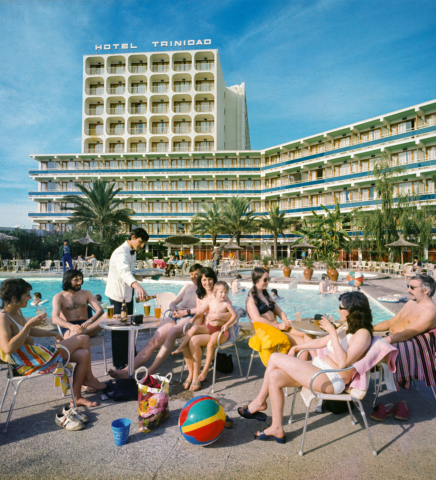Frame; Bringing Back the Retro
By Jo Phillips
The room is pitch black, not a single ray of light is allowed in and you make sure of that by blocking all edges of the door with towels, rugs and scarves. You fumble around the room, only relying on your sense of touch and the familiarity of the process, or from what you had memorised before entering. You take the film out and pray that you can roll it properly without damaging it, put it in the container and start developing. This is the classic and traditional way to develop film in the darkroom to retrieve the photographs taken by what are now vintage/retro cameras: Analogue cameras.
With the increase of technology and in specific digital cameras in the 2000’s, film cameras have been put on the back burner to make space for the more improved, compact and fast versions. With automatic modes fixing the settings depending on the environment, it will be taking the picture in then be digitally downloaded and the final image printed, which several users reported losing the “soul” of photography making it one of the reasons for the comeback of old-style photography.
Whether professionals or amateurs, using film photography has been a trend, bringing back the long hours in the darkroom. It also focuses on all the manual functions that mainly include setting the right shutter speed and apertures, all while knowing the correct way to focus a lens, which the book Retro Cameras – The Collector’s Guide to Vintage Film Photography by John Wade tackles.
Retro Cameras is a guide to classic and retro cameras to help with the re-discovery of analogue photography. Featuring more than a 100 camera models in 13 formats—35mm SLRs, 35mm Rangefinders, 35mm Viewfinder Cameras, Roll Film SLRs, Sheet and Roll Film Folding Cameras, Twin Lens Reflexes, Instamatic, Stereo Cameras, Panoramic and Wide-angle Cameras, Miniature Cameras and Instant Cameras—it gives detailed insights on film photography and the options available. In addition, it includes shooting guides for each camera and a quick list of camera accessories.
Giving the user a timeless physical photograph and more soul to the work, analogue cameras gives creative freedom and control to experiment with photography, all while being retro, vintage, artsy and trendy. Reading Retro Cameras, here is a list of Cent’s favourite ones:
-Olympus OM-1: An 1970’s 35 mm SLR, the first of its kind, the Olympus is a quiet, small and light manual camera. With versatile accessories for it and the option of setting the film speeds to anything between 25 and 1600 ASA, Olympus qualifies as a true system camera.
-Yashica 44LM: Launched in 1959, looking like a mini video camera, this TLR camera takes square pictures on 127 film and has an in-built meter to aid exposure.
-Coronet 3-D Camera: The sophisticated camera was launched in 1953, takes 127 film and has a fixed shutter speed and aperture with two fixed-focus lenses. The vintage looking piece comes with an unusual binocular viewfinder.
-Voigtländer Prominent: Launched in 1951 at the apex of 35mm rangefinder cameras. Coming with several parts, this heavy camera has interchangeable lenses, viewfinders, close-up attachments, filters and other accessories. No subject is too hard to photograph when you have a Voigtländer Prominent.
-Minolta Weathermatic: This yellow quirky camera was launched in 1980 with a design that will protect it from water, dust, sand and damp conditions on the beach. Coming as a 110 film, it is waterproof to a depth of five meters making it ideal for a day at the beach between land and sea.







